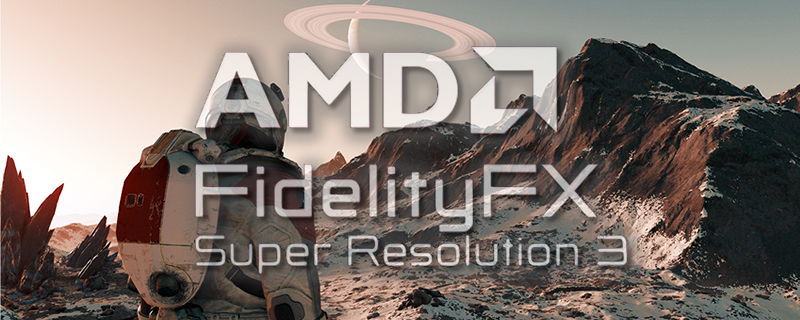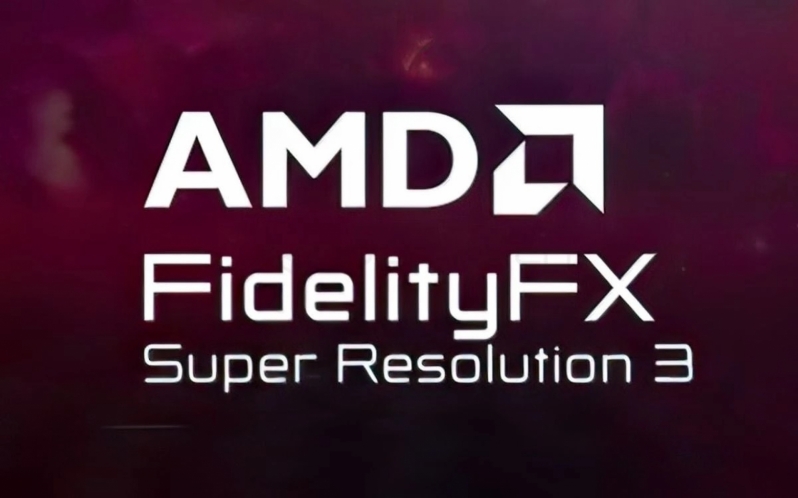AMD's aiming to make Starfield their debut FSR 3 game
FidelityFX Super Resolution 3 is AMD's answer to DLSS Frame Generation
Published: 14th August 2023 | Source: Moore's Law is Dead |

AMD's hoping to launch FSR 3 with their next wave of RDNA 3 graphics cards
When Nvidia launched their RTX 40 series of graphics cards, they revealed DLSS 3, a new version of their Deep Learning Super Sampling technology that adds DLSS Frame Generation into Nvidia's suite of AI game enhancement technologies. DLSS Frame Generation uses AI and other custom RTX 40 series GPU add-on to create additional game frames, which in best case scenarios can effectively double the framerates of PC games.
Shortly after Nvidia's reveal of DLSS 3, AMD confirmed that FidelityFX Super Resolution 3 (FSR 3) was in development, a new technology from AMD that could also deliver up to 2x framerate improvements to games, and rumour has it that AMD's first FSR 3 games could launch as early as September.
According to Moore's Law is Dead, AMD are planning to launch their first FSR 3 titles in time for their Navi 32 GPU launches. This likely means that AMD will be releasing FSR 3 alongside their Radeon RX 7800 XT and Radeon RX 7700 XT graphics cards. There are also rumours that AMD has been working to make Bethesda's Starfield one of their FidelityFX Super Resolution 3 launch titles.
How does FSR 3 work?
AMD has been tight lipped about their planned FSR 3 technology. AMD has briefly showcased FSR 3 in action using Unreal Engine 5's City tech demo, and AMD has stated that the technology uses "Fluid Motion Frames", which suggests that FSR 3 uses generated frames alongside traditionally rendered frames. At this time it is unknown if FSR 3 will utilise the new AI accelerators that are found in RDNA 3 graphics cards, or if FSR 3 will be supported across a broader range of graphics cards.
Nvidia has been marketing their DLSS 3 technology heavily in recent months, and AMD's FSR 3 technology has the potential to undermine these efforts. Should AMD's FSR 3 technology provide similar performance benefits and image quality levels as Nvidia's DLSS 3 technology, AMD's graphics cards will immediately become a lot more attractive to customers, especially if AMD prices their RX 7800 XT and RX 7700 XT GPUs aggressively.
You can join the discussion on AMD's plans for FSR 3 on the OC3D Forums.
Most Recent Comments
Idk the fuss about dlss okay it's a tiny bit better but your literally talking tiny, the only real difference is it takes AMD longer and Nvidia have a huge amount of software devs in comparison.
So in essence exaggerated.
We'll see when it's out as I'm more than sure hardware unboxed will go to town on a video to compare the software in depth.
I feel AI has a flaw of course it has it's uses and semi creative things it can do, but when it comes to the bigger breakthroughs as it's so dependent on where it's sourcing it's creative spark from, it's less able to intelligently fully create anything, which is of course where humans step in and while people are always saying it'll transform the world and in some way it will, it's never going to replace an Einstein or Tesla to them it would be a fun toy.
add to that it's incredibly politically correct and biased in this case.
maybe not so relevant to dlss vs fsr but i've seen so many comparisons and as said it's minor, the only difference being dlss3 is ahead in development and so fake frames smoothing out things is a hype to boast on.Quote
Mostly because games need increasingly more performance for games to progress, and are now becoming reliant on this because AMD and Nvidia refuse to provide said more powerful cards per gen.
I watched a few videos the other day and cards like the 4060 now absolutely have to have this even for 1080p. Which is not what I want to see promoted. Lots of games were exposed to having FSR performance enabled by default just for the game to run properly on lower rent GPUs. Problem is they are not lower rent in regards to the price.
So I don’t like it. It encourages two bad behaviours.
1. Selling less for more and depending on upscaling and not raw, real raster performance and
2. Devs to be sloppy and lazy and use them as a backup to save them real dev time and optimisations.Quote
I think the bigger issue is Nvidia and AMD are reliant on TSMC or others for fabs and production, so the node costs keep going up, but someone has to take the risk and both them companies would rather TSMC take the risk for them.
I think until Nvidia and AMD have there own fabs no real way of reducing costs or making larger dies be it chiplet or other. So we'll just keep seeing them penny pinch and make something that can fit a price point while keeping the margins they want.
Soon thou maybe in 10 years I could see them thinking more about it as things can only get so small or be adapted as IRL size is kinda different it's more just in theory it performs at 3nm 2nm 1nm but a brick wall is coming and not far off i feel.
So in maybe 10 years time we might see an absolute peak in terms of what they can get from chips and 100% need chiplet or just accept that tech in this form has reached a lot slower progress, when comparing GPU to CPU's there are trends in these things and they love to milk something for all it's worth to get the absolute maximum margins back on the investment.
Sometimes DXR really adds something and other times adds nothing so it's half lazy and half really visually pleasing.
So for me dlss and fsr tbh only are of use when something really looks good and demands the help to look that good otherwise it's a useless feature as imho i don't see the need myself to go beyond 144hz okay you can sure tell the difference but i doubt it would add anything to me if i had a 240+hz screen it wouldn't improve my feeling when playing anything.
I'm looking forward to some really nice new UE5 games sure they will most likely run like dog's at first but at least it'll be something new and working, tech demos and oh it's coming at times in the industry seems to take forever to actually be in use.
like DX12 DX12.1 DX12 Ultra and so on, by the time it's actually really good and working with many games if you brought in early your getting screwed over as the end result cant even run well on your first gen hardware. Just seems to take far to long and companies should work more closely together to get to the end goal in a better time frame then i could let most things slide outside of that, like idk having standards in place so that things work ?Quote

